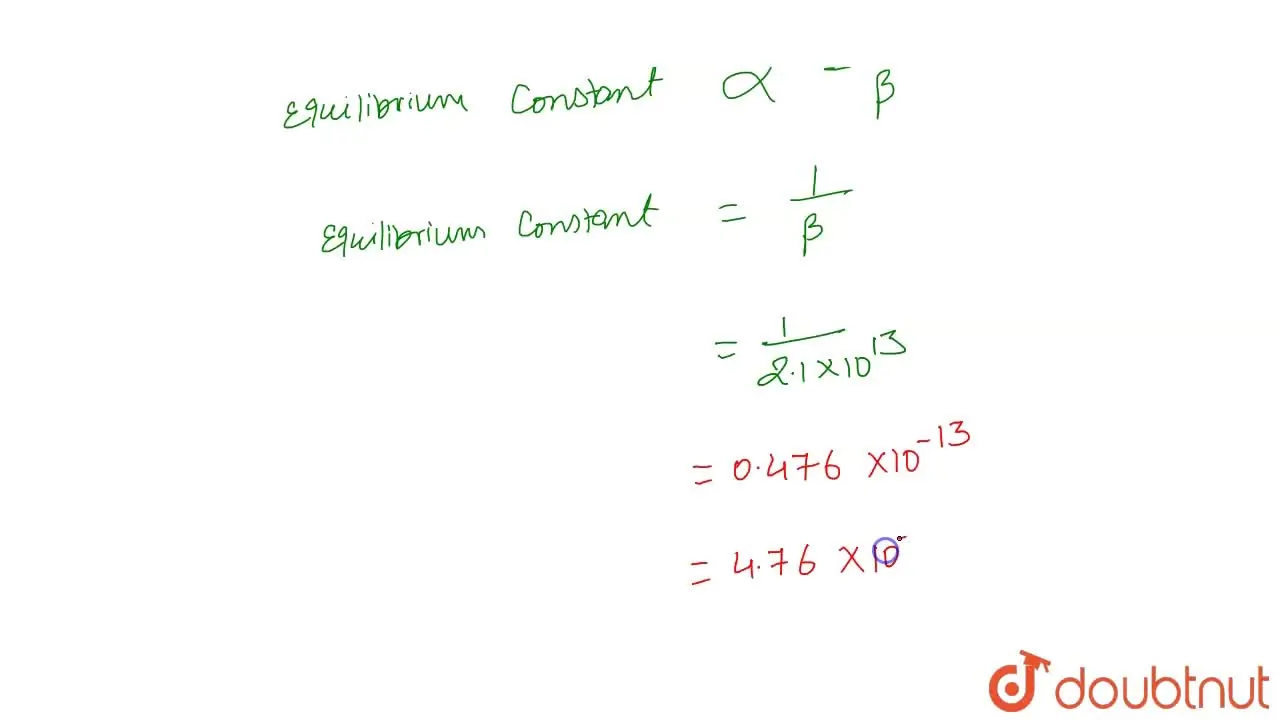(a) What is meant by unidentate, bidentate and ambidentate ligands? Give two examples for each.
(b) Calculate the overall complex dissociation equilibrium constant for the Cu(NH3)2+4 ion, given that β4 for this complex is 2.1×1013.
(a) A molecule or an ion which has on]y one donor atom to form one coordinate bond with the central metal atom is called unidentate ligand, eg., Cl−andNH3. A molecule or an ion which contains two donor atoms and hence forms two coordinate bonds with the central metal atom is called a didentatc ligands, eg., NH2−CH2−CH2−NH2and−COC−COO A molecule or an ion which contains two donor atoms but only of them forms a coordinate bond at a time with the centeral metal atom is called ambidentate ligand, ag, : CN−orNC:and:NO2or:ONO−.
(b) (i) Cu2++NH3⇔Cu(NH3)2+
k1=[Cu(NH3)]2+[Cu2+][NH3]
(ii) Cu(NH3)2++NH3⇔Cu(NH3)22+
k2=[Cu(NH3)2]2+[Cu(NH3)]2+[NH3]
(iii) β4=[Cu(NH3)4]2+[(NH3)]4[Cu2+]
[β4=k1×k2×k3×k4]
Related Playlists
- BOOK - XII BOARDS PREVIOUS YEARCHAPTER - XII BOARDSEXERCISE - SET- II10videos
XII BOARDS
- BOOK - XII BOARDS PREVIOUS YEARCHAPTER - XII BOARDSEXERCISE - SET- III10videos
XII BOARDS
- BOOK - XII BOARDS PREVIOUS YEARCHAPTER - XII BOARDSEXERCISE - IMPORTANT QUESTIONS FOR PRACTICE CHEMISTRY (THEORY-XII) UNSOLVED)42videos
XII BOARDS
- BOOK - XII BOARDS PREVIOUS YEARCHAPTER - SAMPLE PAPER 2019EXERCISE - SECTION: D1videos
SAMPLE PAPER 2019
Similar Questions
What is meant by unidentate, didentate and ambidentate ligands ? Give two examples for each.
View SolutionWhat is meant by unidentate, didentate and ambidentate ligands ? Give two examples for each.
View SolutionCalculate the overall complex dissociation equilibrium constant for the Cu(NH3)2+4 ion, given that β4 for this complex is 2.1×1013.
View SolutionWhat is meant by unidentate and ambidentate ligands? Give two examples for each.
View SolutionFind pK if K is the overall complex dissociation equilibrium constant for [Cu(NH3)4]2+ ion, given that β4 for this complex is 2.0×1013 :
View SolutionFind pK if K is the overall complex dissociation equilibrium constant for [Cu(NH3)4]2+ ion, given that β4 for this complex is 2.0×1013 :
View SolutionCalculate the instability constant for [Ni(NH3)6]2+, given that β6 for this complex is 2×1012
View SolutionThe complex ion [Cu(NH3)4]2+ is
View SolutionThe complex ion [Cu(NH3)4]2+ is
View SolutionThe shape of [Cu(NH3)4]2+ is square planar, Cu2+ in this complex is
View Solution


